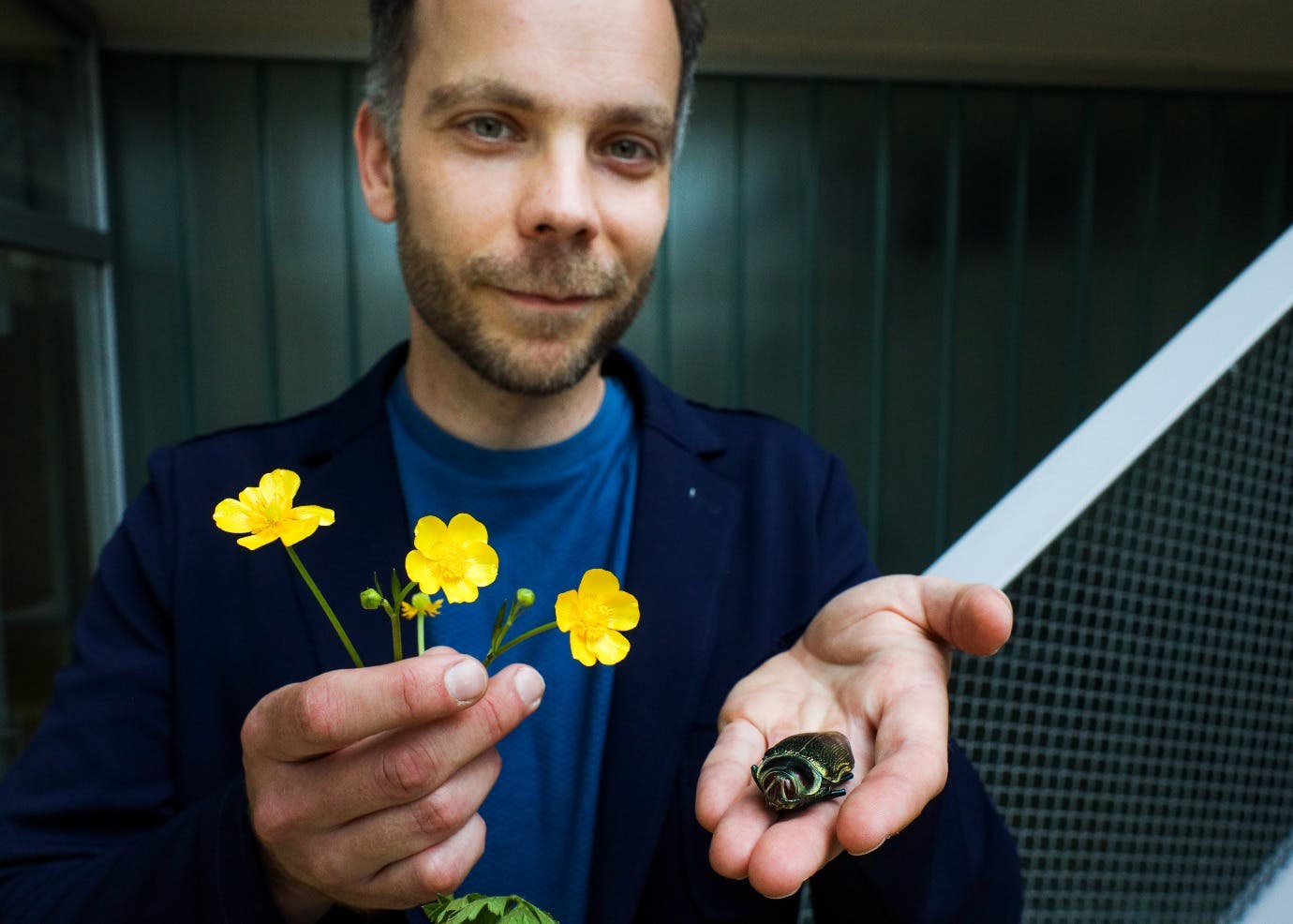Scientists discover brain protein that can slow down aging
New research is uncovering how restoring one key brain-fat communication pathway may hold the power to delay aging and extend life.

A new study reveals how fat and brain signals work together to control aging. (CREDIT: mavo, Shutterstock)
As you age, your body begins to slow down—not just in how it moves, but also in how its parts talk to each other. Organs rely on signals, sent through nerves and blood, to stay in sync and working well. But when those signals begin to fade, so does your body’s energy, strength, and ability to stay healthy. New research is uncovering how restoring one key brain-fat communication pathway may hold the power to delay aging and extend life.
A critical link between brain and body
Scientists at Washington University School of Medicine in St. Louis recently discovered a set of neurons deep in the brain that act as aging regulators. These neurons are located in the dorsomedial hypothalamus, or DMH, an area long known to manage basic functions like hunger, sleep, and body temperature.
But this study shows that the DMH plays an even bigger role: it communicates directly with fat tissue to control aging across the entire body. The team focused on a specific group of neurons that produce a protein called Ppp1r17. These neurons, called DMHPpp1r17 neurons, were found to regulate both physical activity and fat tissue health by sending signals through the sympathetic nervous system—a branch of the body’s automatic response network.
As Dr. Shin-ichiro Imai, senior author of the study, explained, “We demonstrated a way to delay aging and extend healthy life spans in mice by manipulating an important part of the brain.” Imai, a professor in the Department of Developmental Biology, described this brain-fat link as a feedback loop that drives the body’s energy balance.
Here’s how it works: When the Ppp1r17 protein stays inside the neuron’s nucleus, the neuron remains active and sends strong signals to white adipose tissue—the fat just under your skin and around your belly. That fat, in turn, releases fatty acids that fuel your muscles and brain. It also sends out a powerful enzyme called eNAMPT, which travels back to the brain and keeps it energized.
Why aging disrupts this system
As mice age, researchers found, the Ppp1r17 protein moves out of the nucleus and into the cytoplasm. That weakens the neuron’s activity and slows down the signals it sends to fat tissue. Over time, the dense nerve network in the fat begins to shrink. The result is a dangerous cycle: the fat stops releasing eNAMPT and fatty acids, and the brain doesn’t get the energy it needs. Physical activity drops, fat builds up, and aging speeds up.
Related Stories
But the scientists didn’t stop at simply observing this pattern—they changed it. By using genetic techniques to keep Ppp1r17 in the nucleus, they maintained the neuron’s ability to signal fat tissue even in older mice. They also activated these neurons directly using a method called chemogenetics, which uses engineered receptors to control brain activity.
The outcomes were impressive. Older mice with these changes showed increased movement, improved fat function, and longer lifespans. Typically, lab mice live about 900 to 1,000 days. But those with the enhanced brain-fat loop lived an extra 60 to 70 days—a 7% increase. For a 75-year-old person, that would translate to nearly five additional years of life. These mice also looked younger, with thicker and shinier coats, hinting at improved overall health.
Decoding the molecular players
One of the major findings of the study centers around eNAMPT, a molecule made in fat and sent to the brain. It boosts NAD+ production, which is vital for energy metabolism in cells. The enzyme behind eNAMPT production, nicotinamide phosphoribosyltransferase (NAMPT), is tightly regulated. SIRT1, a protein in the hypothalamus, helps control this process. Previous research showed that SIRT1 delays aging by working with another protein, Nkx2-1, to keep neurons active.
These findings connect well with earlier discoveries. For example, scientists had already shown that SIRT1 and Nkx2-1 help keep body temperature, sleep, and energy levels stable in aging mice. In the lateral hypothalamus, neurons that carry a NAD+ precursor transporter called Slc12a8 also help regulate muscle function through similar sympathetic signals. When researchers restored this gene in aged mice, the animals became stronger and more active.
The recent study builds on this body of work by tying together fat, brain, and lifespan into one system. When DMHPpp1r17 neurons signal correctly, they prompt fat cells to release eNAMPT inside tiny packages called extracellular vesicles. These vesicles travel through the bloodstream to reach the brain and other organs, where they support cellular energy production. Raising levels of circulating eNAMPT has already been shown to increase lifespan in mice.
Dr. Imai said, “We can envision a possible anti-aging therapy that involves delivering eNAMPT in various ways.” In fact, his lab has already used eNAMPT-containing vesicles to boost NAD+ levels in the brain, showing they can restore youthful traits.
Fat tissue as a fountain of youth?
The connection between fat and aging may seem surprising at first. Fat has often been seen as a problem, not a solution. But white adipose tissue plays a key role in this brain-fat feedback loop. In healthy animals, this fat communicates with the brain by releasing eNAMPT. But as the body gets older, this signal weakens.
In the study, when scientists knocked down the gene Prkg1 in the hypothalamus, which controls the activity of the Ppp1r17 protein, they could stop the harmful age-related changes. This blocked the shift of Ppp1r17 out of the nucleus and preserved the neuron’s function. With this signal restored, fat began working like it did in younger animals, releasing eNAMPT and fatty acids again.
The research reveals how essential inter-tissue communication is to aging. The team also noted that other factors—like the liver hormone FGF21—support hypothalamic function and extend lifespan. In fact, mice engineered to overproduce FGF21 lived longer and resisted age-related decline. Similar patterns have been seen in humans, pointing to a broader role for these feedback loops across species.
Toward future therapies
This work raises important possibilities for the future of anti-aging medicine. Instead of targeting one organ or pathway, treatments might aim to support or restore the body’s natural communication systems. This could mean developing drugs that keep Ppp1r17 inside neurons, enhancing SIRT1 signaling, or delivering eNAMPT through vesicles.
Though this study was done in mice, the results align with broader theories about aging and energy regulation. Ppp1r17, the protein at the center of the new study, is found in many animals—from humans to birds—suggesting its role has been preserved through evolution.
In addition, earlier studies linked Ppp1r17 to food control and brain development. These hints suggest that its role in coordinating fat and brain function may go beyond aging, perhaps even influencing how you eat, grow, and think.
The research team plans to explore these avenues further. Their goal is clear: find ways to preserve the delicate balance between brain and body, so people can live not just longer, but better.
As aging science moves forward, this study offers a glimpse into what might be possible—not just adding years to life, but adding life to years.
Research findings are available online in the journal Cell Metabolism.
Note: Materials provided above by the The Brighter Side of News. Content may be edited for style and length.
Like these kind of feel good stories? Get the Brighter Side of News' newsletter.



